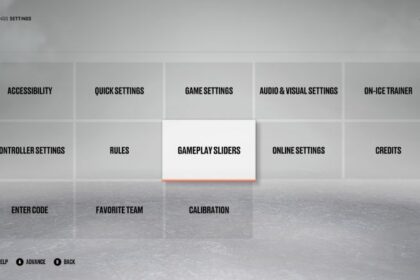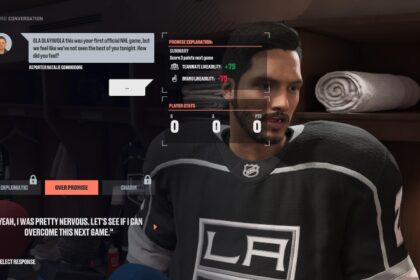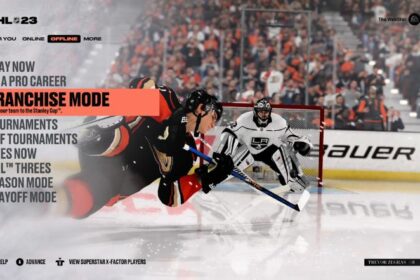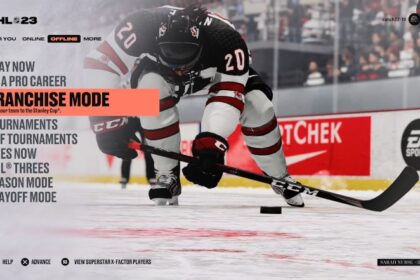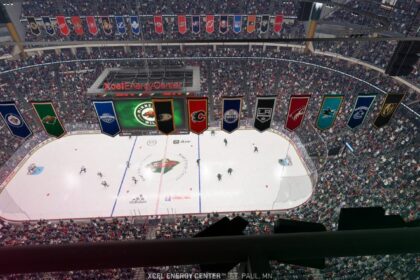If you have more of the puck, it does not guarantee you are going to win matches in NHL 23. There is a lot to be said for playing on the counterattack and trying to score past opponents on the rush.
However, the easiest way to control the game, dictate the pace, and create more scoring opportunities is to keep the puck for long periods.
To do this, you need to learn how to win faceoffs in NHL 23. Learning how to win faceoffs is essential, as it is a similar process to the tip-off in basketball, but it occurs at the start of every phase.
This article will teach you how to win faceoffs in NHL 23 more frequently and set up more attacks as a result.
NHL 23 Faceoffs
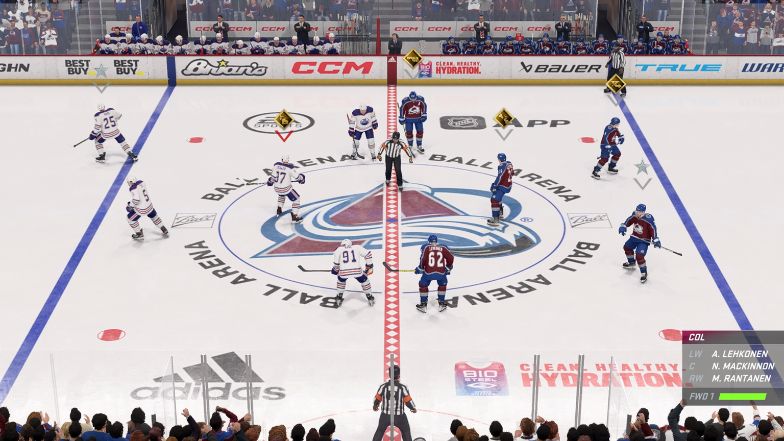
Faceoffs have long been a core aspect of any ice hockey game. The puck determines which team will gain control for the next phase and give them more chances of scoring against their opposition.
It is all well and good learning how to deke or how to do a wrist shot, but if you don’t have possession of the puck, these skills are pointless.
Generally speaking, unless you change the specialist teams, the center in your lineup will be the one required to take on the faceoff.
To begin a faceoff, both centers stand across from each other, on either side of one of the faceoff dots.
The referee will approach, which is when you want to select your grip. Then the puck drops, and execute your faceoff action with the right timing to try and claim the puck for your team.
Timing plays a huge role in whether or not you are successful in a faceoff.
Once you begin to understand the referees’ mannerisms and get the timing right, you can start playing around with different faceoff moves.
NHL 23 Faceoff Controls
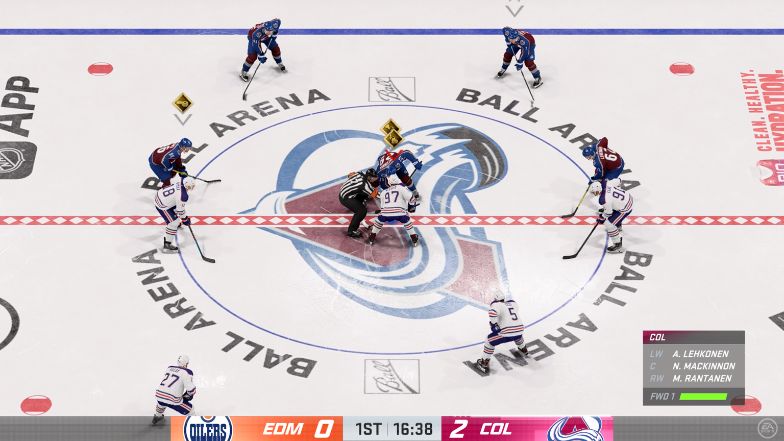
Fortunately, the faceoff controls in NHL 23 are very simple to get the hand off. For starters you only need to pick a hold from two grip options, and move after puck drops.
However, there are various faceoff actions that you can execute at this point, to try and counter whichever one your opponent has chosen.
| Type of Faceoff Style | Controls |
|---|---|
| Set Forehand Grip Prior to Drop | Move Right Analogue Left |
| Set Backhand Grip Prior to Drop | Move Right Analogue Right |
| Aim Puck Win Direction | Move Left Analogue in the direction of the intended receiving player |
| Basic Forehand Controls | Right Analogue Left , Right Analogue Down |
| Basic Backhand Controls | Right Analogue Right, Right Analogue Down |
| Forehand Stick Lift Controls | Right Analogue Left, Right Analogue Up, Right Analogue Down |
| Backhand Stick Lift Controls | Right Analogue Right, Right Analogue Up, Right Analogue Down |
| Faceoff Deke Controls | L1/LB and Move Right Analogue Up |
| Forehand Tie-Up Controls | Right Analogue Left, Left Analogue Up |
| Backhand Tie-Up Controls | Right Analogue Right, Left Analogue Up |
| Faceoff Shot Controls | Move Right Analogue towards the goal |
Winning Faceoffs in NHL 23
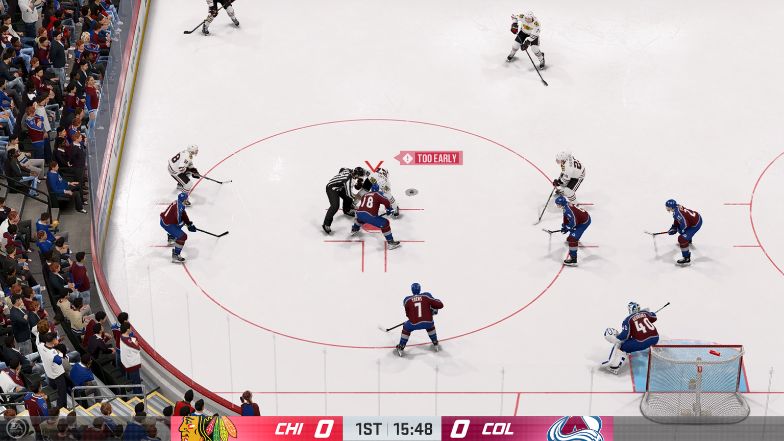
To win faceoffs in NHL 23, you must set your grip prior to the puck getting dropped, avoid playing your faceoff action until the puck reaches the ice, and select a faceoff action that perfectly counters your opponents.
That might seem like a lot to remember, but there is also one other thing you can do to give yourself a better chance of winning faceoffs, which is select centers with high poise and faceoff statistics.
Tips to Win More Faceoffs in NHL 23
From a controls perspective, faceoffs are relatively simple, and most draws will come down to who has the best timing, not a higher skill set.
However, there are a couple of tips you can use to give yourself a better chance of winning faceoffs.
Recruit the Best Faceoff Centers
One way to guarantee you have more success and a wider threshold of timings and other key aspects are to sign a center for your franchise with fantastic faceoff statistics.
In general, two-way centers often have the best faceoff statistics, so try to recruit one of those players for your team to give yourself the best chance of winning possession for your team.
Be Wary of Quick Draw
NHL 23 marks the second year of x-factors, one of which is known as Quick Draw, which can be particularly beneficial in a faceoff circle
Quick Draw allows for exceptional unrivaled quickness in a faceoff, as well as better defensive zone faceoff statistics, and so on.
Be mindful of coming up against players with this x-factor ability, as they will be near impossible to beat in a faceoff.
Timing is Everything
If you are not prepared and in position, before the puck drops, you will probably lose the draw. Ensuring you execute the perfect timing is essential for anyone who wants to become more successful in their faceoffs.
Ensure you have your grip set in forehand or backhand as soon your feet are set and then hold off executing the faceoff action until right after you see the NHL referee lean in and drop the puck.
Keep an Eye on Your Opponent’s Hands
To try and establish which faceoff action your opposition is planning on using, you must keep an eye on their hands and see which one they place lower on the stick.
If you can spot the player’s thumb and fingers, they’re going to use a forehand grip. A simple forehand grip can easily get beaten by a backhand faceoff action or even a forehand stick lift.
You could even best your opposition’s basic forehand grip with the exact same grip, so long as you got the timings correct.
If you notice the knuckles of the player’s glove instead, this signals the opposition is choosing a backhand, which you can counter with a better-timed backhand or a tie-up move.
Set-up on the Backhand
From testing all of the faceoff actions in NHL 23, we noticed that the basic background faceoff moves are the most reliable and easiest to pull off.
Not to mention the fact that they are extremely effective against CPU opponents. If you prefer to play online, though, you should mix up your faceoff styles so that you don’t become predictable.
Final Thoughts
Ultimately, learning a couple of different faceoff moves is essential to keep your opponent on your toes and win more faceoffs online. If you only play offline, you will probably only need to learn a few backhand moves.
However, if you prefer to play online, your opponent will soon realize what you are doing and counter your backhands, so you will need to learn a couple of the other moves as well.

